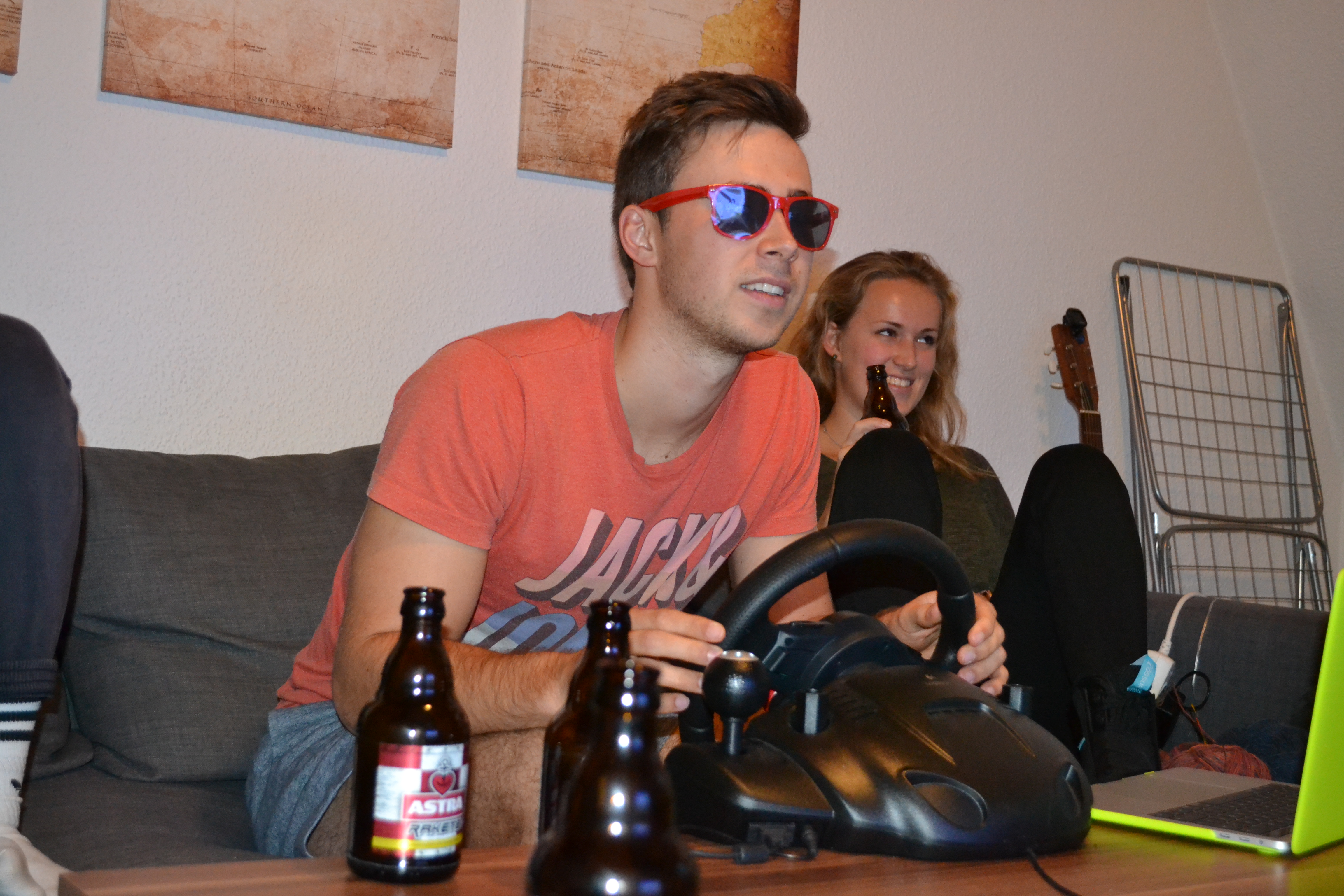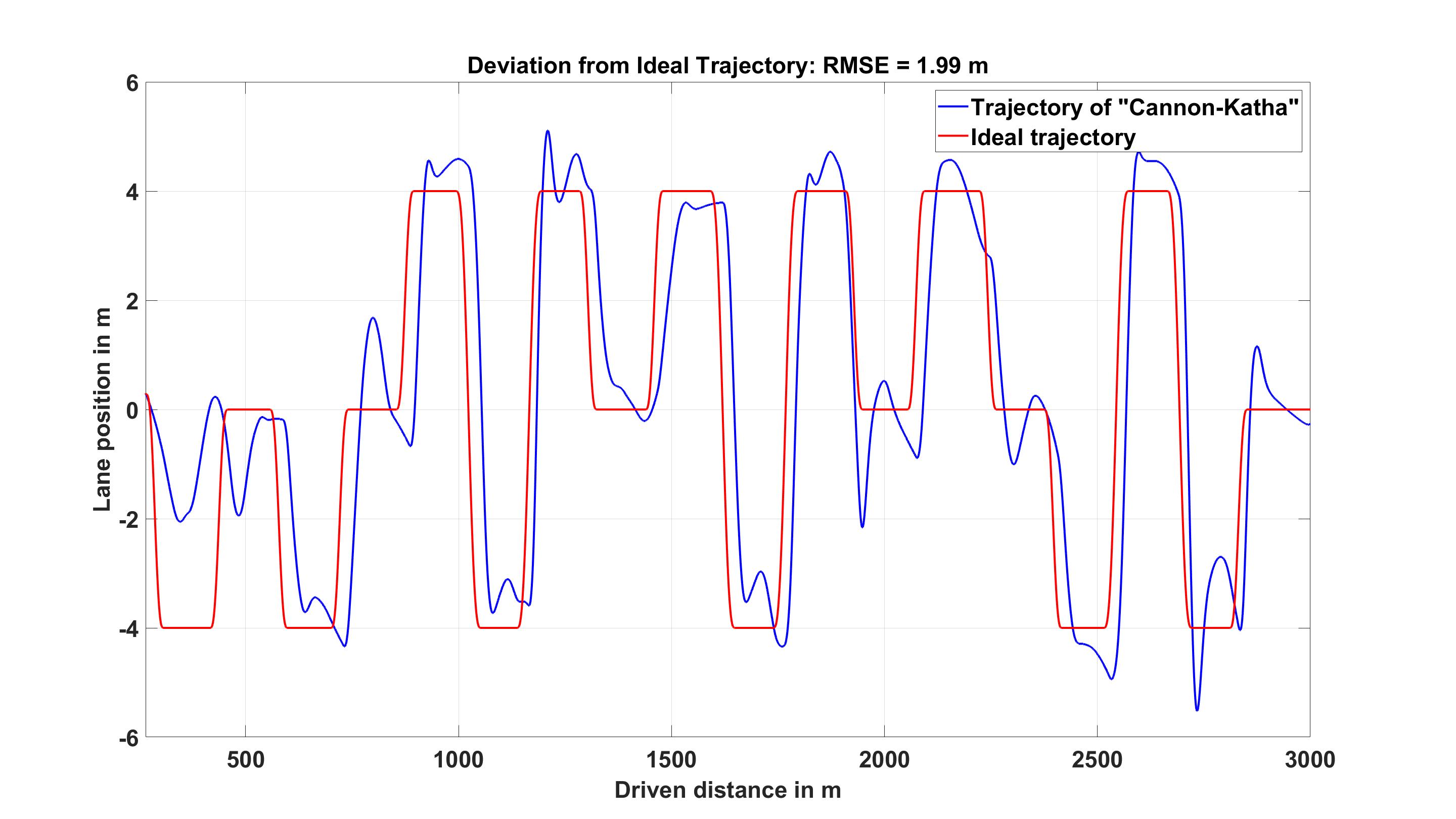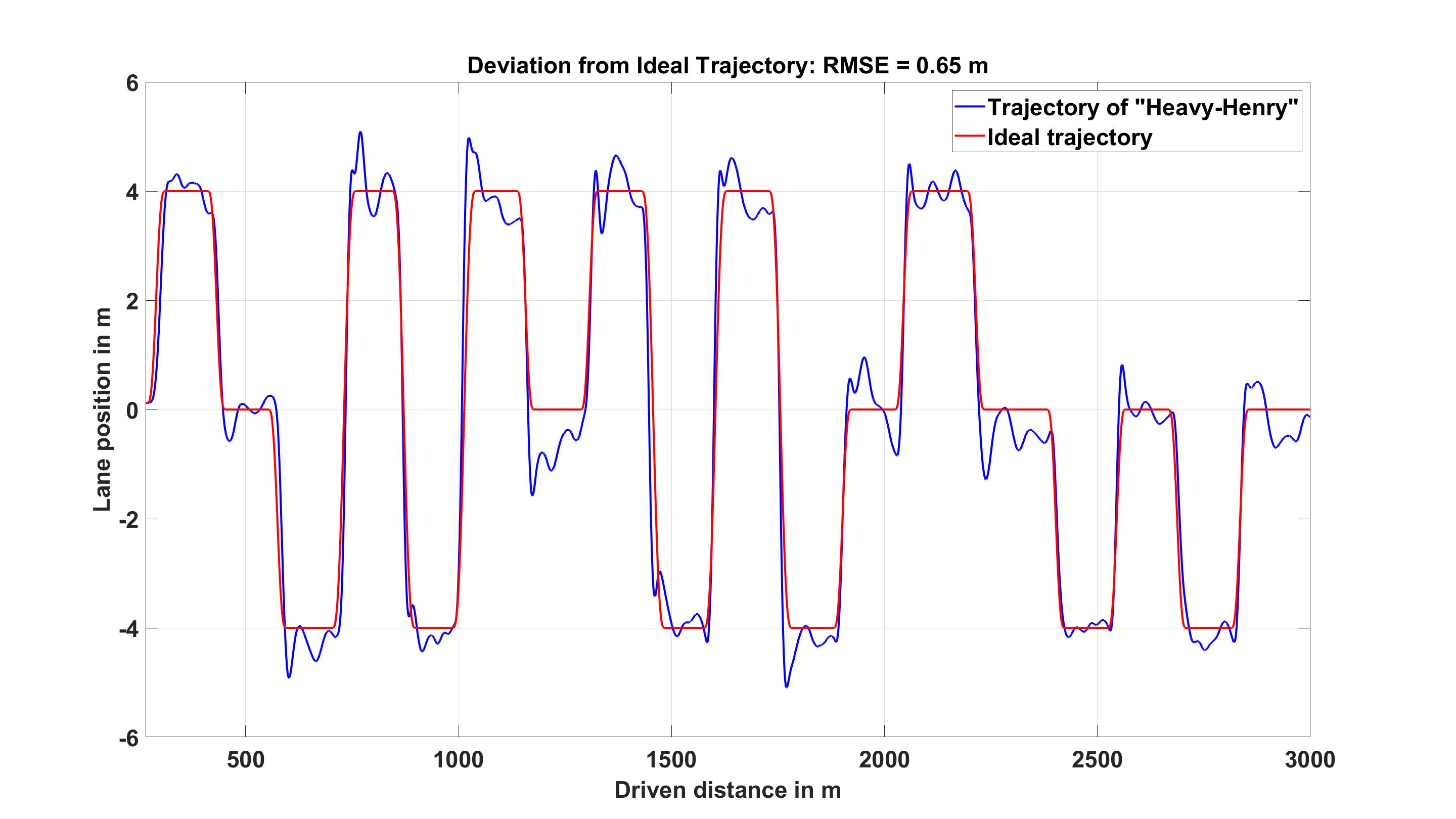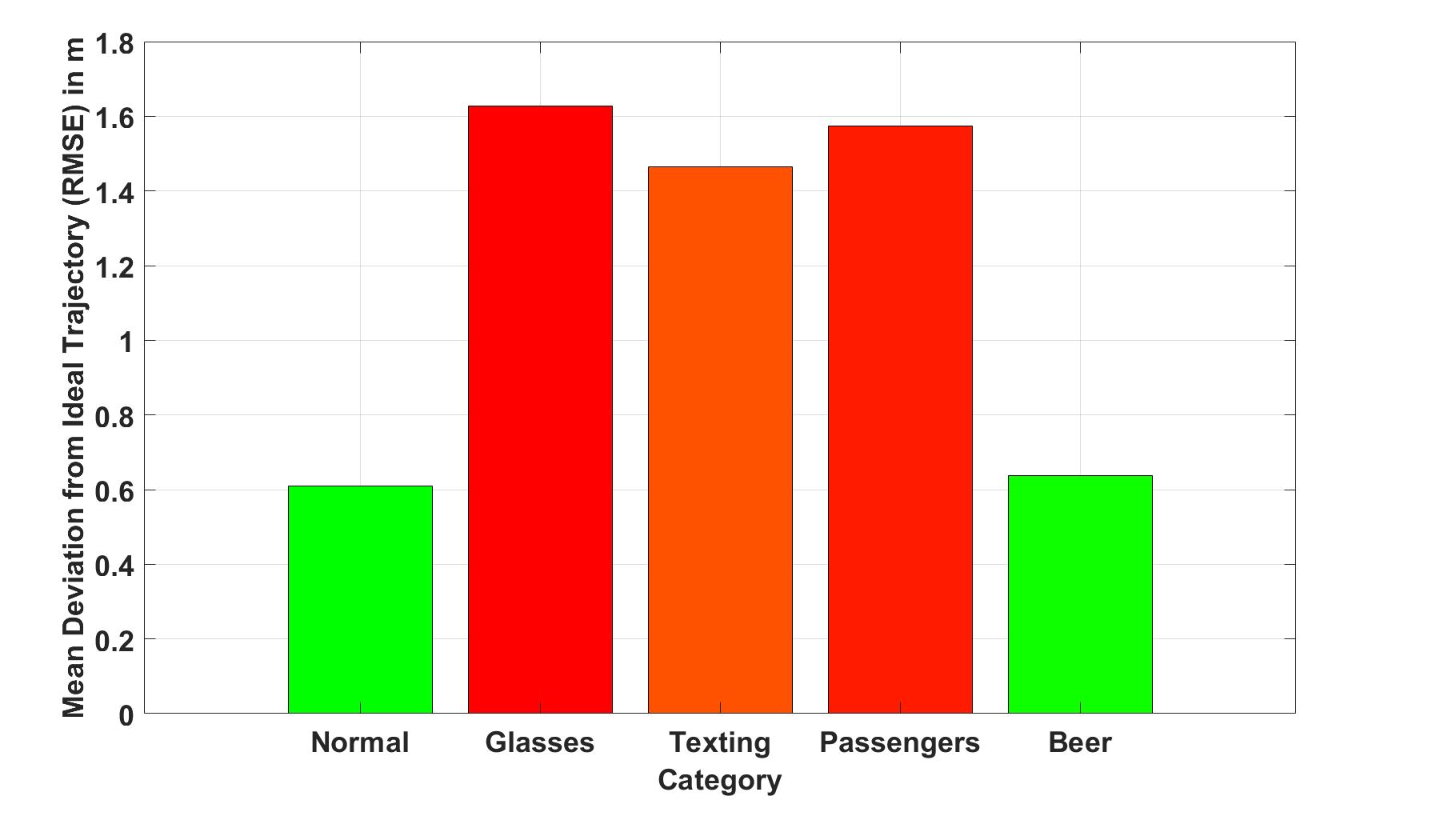Driving Simulator
Introduction
In this project we - two students of electrical engineering - developed a game in which driving skills of a test person can be studied. The aim is to detect the influence caused by deflection and lack of concentration. Therefore, we set up five different situations in which six test drivers were asked to keep the vehicle as well as possible in one of three lanes, indicated by signs standing at a distance of 150 m (see video).
|
|
|---|
 At the beginning we performed a drive under normal conditions (silence) for reference. In the first category a visual impairment was simulated by glasses with a transparent layer (see image). An also well-known problem is the usage of smartphones whilst driving. Therefore, the participants had to respond to text messages like "Where are you and when will you arrive?" in whole sentences or answer a phone call. The fourth category was distraction by passengers and loud music. The driver was constantly asked questions by the front passenger and "children" on the back seat. As a last category we decided to analyze the influence of alcohol on driving. Several beers were involved to scientifically prove the impact of alcohol on the concentration.
At the beginning we performed a drive under normal conditions (silence) for reference. In the first category a visual impairment was simulated by glasses with a transparent layer (see image). An also well-known problem is the usage of smartphones whilst driving. Therefore, the participants had to respond to text messages like "Where are you and when will you arrive?" in whole sentences or answer a phone call. The fourth category was distraction by passengers and loud music. The driver was constantly asked questions by the front passenger and "children" on the back seat. As a last category we decided to analyze the influence of alcohol on driving. Several beers were involved to scientifically prove the impact of alcohol on the concentration.
Algorithm
Using MATLAB, we created a script that analyzes the text file created by the simulator "Lane-Change Test (LCT)" after driving. By calculating an ideal driving trajectory and determining the root mean squared error (RMSE) of the actually driven trajectory from the ideal trajectory a meaningful coefficient is introduced. An ideal trajectory can be found by defining the constants lane change time and reaction time. The lane change time is the time needed for a lane change to the next or after next lane. Reaction time is the minimal time a person needs to react to an appearing sign (typical values: 220 ms). Calculating the ideal trajectory in the transition between two lanes can be done using the oblique sine line [1].
Drivers
Heavy-Henry
|
Kamikaze-Ivan
|
Shortshift-Kristin
|
||
Cannon-Katha
|
Tank-Toni
|
Bullet-Nils
|
Categories
- Normal

Task:
Achieving best results by reacting as quick as possible to appearing signs and performing a smooth lane change.
- Glasses

Task:
Wearing glasses with a transparent layer that simulate a visual impairment.
- Texting

Task:
The drivers were asked to respond to text messages and had to start phone calls while driving.
- Loud music and passengers

Task:
Driving as precise as possible while being distracted by the front passenger and children on the backseat.
- Beer

Task:
After drinking enough beer, the drivers were asked to perform a last drive with maximal concentration.
Results
 |
 |
|---|---|
On the left you can see the deviation from the ideal trajectory of the drivers, averaged over the five categories, whereas on the right the deviation averaged over the categories is displayed. With the data on the right we can say that poor visibility, distracting passengers and texting while driving has the most influence on reaction time and driving quality. Drinking alcohol leads to higher deviations in comparison to the normal drive too. It should also be noted that a learning effect was certainly present. Therefore, for further tests a learning phase should be considered in which the drivers get used to the driving environment.
Conclusion
With the Driving Simulator "Lane-Change Test (LCT)" and our MATLAB script a significant test for driving quality was created. It can be used for different applications like testing the influence of an In-Car Communication (ICC) System on driving.
Participating Students

- Henry Baumann
- Toni Lekic
Supervisors
- Marco Gimm
- Anton Namenas
- Gerhard Schmidt
References
| [1] | Heinz Burg and Andreas Moser: "Handbuch Verkehrsunfallrekonstruktion", Springer Fachmedien Wiesbaden GmbH, pp. 163-166, 2017 |

 On behalf of the members of the Chair of Digital Signal Processing and System Theory, we would like to take this opportunity to wish you all a very Merry Christmas and a peaceful, restful winter break. We hope that this festive season brings you joy, relaxation, and cherished moments with your loved ones.
On behalf of the members of the Chair of Digital Signal Processing and System Theory, we would like to take this opportunity to wish you all a very Merry Christmas and a peaceful, restful winter break. We hope that this festive season brings you joy, relaxation, and cherished moments with your loved ones.